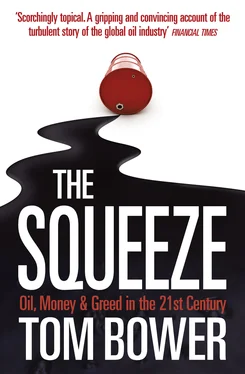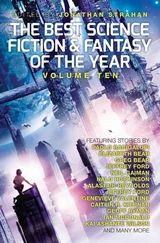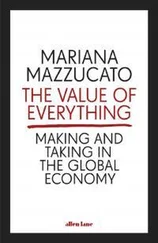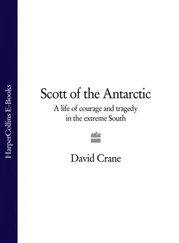Like the others in the room, David Rainey had learnt his craft during four years in Alaska. In 1991 he had moved to the Gulf of Mexico. ‘I’ve been there when we’ve hit,’ he sighed, ‘and also when we missed. A dry hole and you feel like jumping out of the window. The emotions are indescribable.’ In 1999 some had been convinced that ‘Big Horse’, a test drill in the Gulf, was a certainty, but the news from the geologist on the rig that the fossils brought up from the deep were Upper Cretaceous rather than Miocene cast a gut-wrenching gloom across the Operations Room. ‘We’re 60 million years out,’ moaned the blonde team leader. Any oil would have been ‘overcooked’. Every one of the experts in the HIVE had suffered similar agonies.
In recent years, dry holes had wrecked major oil companies. The skeletons of Gulf, Texaco, Arco and other past icons mercilessly testified that only the fittest and bravest survived. By placing enough bets to balance the odds, BP’s executives calculated that what the industry uncharitably called ‘orphans’ would not sink their company. Success depended on taking risks and limiting mishaps, not least thanks to inspired luck. BP had made a fortune in Alaska when Jim Spence, the company’s chief geologist in Alaska, struck oil in 1969 after deciding to drill on the rim of a potential reservoir, because the cost of the licence on the ‘sweet spot’ was too expensive. Its rival Arco, drilling in the ‘sweet spot’, found only non-commercial gas. Alaskan oil saved BP, but did not make the company immune to future errors. In 1983 it invested $1.6 billion to drill in the frozen waste at Mukluk in Alaska. That they would find at least a billion barrels of oil, BP’s geologists told newspapers, was ‘certain’. Instead, they hit salt water. The oil had leaked away. ‘ We drilled inthe right place,’ said Richard Bray, the local chief executive, ‘but we were simply 30 million years too late.’ For the next 10 years, BP became complacent and chronically risk-averse, searching for oil in the wrong places.
Rainey enjoyed the rigorous challenges during those impassioned days in the Exploration Forum. ‘Nothing gets through on salesmanship and goodwill,’ he warned. The debate ranged between ‘concepts’, immature proposals that were a twinkle in someone’s eye; to ‘play’, which was work in progress; and finally to ‘prospects’, which offered a serious chance to find oil. ‘We’ve got to focus on the big stuff,’ Rainey reminded his experts. Like its major rivals, BP could only survive by finding huge reservoirs, or ‘elephants’. ‘Little things make no difference to BP,’ John Browne had ordained, knowing that finding a small field could take as long as finding a big one. Failure, Rainey knew, would delight his rivals. Across the globe, Shell, Chevron, Exxon and smaller adversaries were holding similar conferences. Amid ferocious competition, the challenge was to accurately assess the cost of failure. Like Exxon and Shell, BP had been accused of being averse to risk, too eager to return money to shareholders rather than to invest in finding new oil. ‘Volume versus risk,’ said Rainey, echoing an oil industry truism. Reducing the 50 potential wells to 20 eliminated some risk. The holes chosen, Rainey predicted, would ‘glow in the dark’.
His self-confidence reflected oil’s changing fortunes. Twenty years earlier oil had sold at less than $10 a barrel. Without money, exploration was limited. In the late 1980s the Gulf of Mexico had been classified as an area where inadequate technology prevented new oil being found. Rising oil prices since 2003 had invigorated the search, and technological advances delayed the death certificate. With prices hovering around $25 a barrel, the public assumed that the international oil companies would continue to produce unlimited supplies. The oil chiefs knew the opposite. Finding new oil was becoming harder, and opportunities to enter oil-producing countries were diminishing, although new technology consistently embarrassed the pessimists. Within the Big Brain Room were the architects of BP’s latest success, which had restored the company’s credibility. In 2004 ‘Thunder Horse’, a 59,500-ton, semi-submersible cathedral, the world’s biggest platform, had been towed from Korea and positioned over an ‘elephant’ reservoir in the Mississippi Canyon, identified by the US Department of the Interior as Block 778, 125 miles south of New Orleans. Designed to extract an astounding 250,000 barrels of oil and 200 million cubic feet of natural gas from four miles beneath the waves every day, it led to chatter among the Gulf’s aficionados that BP was overtaking Shell, the pathfinder in the region.
Since 1945 oil had been extracted from the Gulf’s shoreline waters, especially by Shell. For years the deep-water limit was assumed to be 1,500 feet. John Bookout, the head of Shell’s exploration in the Gulf, challenged that assumption, believing that the Gulf, like Prudhoe Bay in Alaska, would minimise America’s reliance on imported oil. In May 1985 the drill ship Discoverer Seven Seas began boring 12 exploratory wells in 3,218 feet of water. Oil was found, and a Ram-Powell platform weighing 41,000 tons was towed to the site. That project, also financed by Amoco and Exxon, confirmed that oil could be recovered from the depths and be piped 25 miles along the sea bed to terminals.
Bookout next focused on the nearby Mars field, 130 miles south-east of New Orleans. In 1987 Conoco had lost millions of dollars drilling dry holes there. Unable to afford further exploration from rigs floating 3,000 feet above the sea bed, the company sold the rights to Shell. Bookout was convinced that the drill should have been placed just 400 yards away. Soon after Shell’s purchase, Jack Golden, BP’s head of exploration in the Gulf, offered to buy a third of Shell’s investment in return for sharing a proportion of the cost. Passive investment, or ‘farming in’, by competitors was not unusual in big projects. Even the mighty oil corporations needed to mitigate their risks. Golden had regretted BP’s tardiness in bidding for the US government’s first round of ten-year licences for deep-water exploration in the Gulf, and his irritation was compounded by Shell’s perfunctory rebuff of his offer. Shell’s executives did not want to share their potential profits, especially with BP. Over the previous decade they had enjoyed watching BP’s struggle to survive, and some hoped their rival might even go out of business, allowing Shell to absorb the wreckage. But just one year later the companies’ fortunes were reversed. Shell had wasted $300 million drilling a succession of dry holes in the Chukchi Sea off Alaska. In urgent need of finance, the same executives had reluctantly agreed to Golden’s offer to share in the Mars field. In return for paying 66 per cent of the well’s costs, BP would receive one third of Mars’s income. In May 1991, Shell struck oil. ‘Getting Mars was a bonanza in 1988,’ said Bob Horton, BP’s chief in America. ‘Mars saved BP from bankruptcy.’ Dean Malouta, Shell’s skilled Greek-Italian inventor of sub-sea technology, would bitterly agree: ‘We are crazy to give BP a lifebelt. They brought nothing to the table except money.’
Shell’s discovery, and the introduction of new engineering techniques, washed aside a whole lexicon of uncertainties and prejudices which had gripped the Gulf’s explorers. Not only had Shell’s engineers drilled deeper than anticipated, but the gush of oil was far greater than anyone had expected. Even before the rig for Mars was built and towed from Italy, Shell had broken another world record. In 1993, using a rig tied to the sea bed by barn-sized anchors in 2,860 feet of water, the company’s geologists had found a giant reservoir called Auger 5,000 feet below the sea bed, while in 1995 at the nearby Mensa field, abandoned in 1988 as technically too difficult, Shell’s new technology and about $290 million enabled oil and gas to be extracted from 5,400 feet.
Читать дальше











![John Bruce - The Lettsomian Lectures on Diseases and Disorders of the Heart and Arteries in Middle and Advanced Life [1900-1901]](/books/749387/john-bruce-the-lettsomian-lectures-on-diseases-and-disorders-of-the-heart-and-arteries-in-middle-and-advanced-life-1900-1901-thumb.webp)
